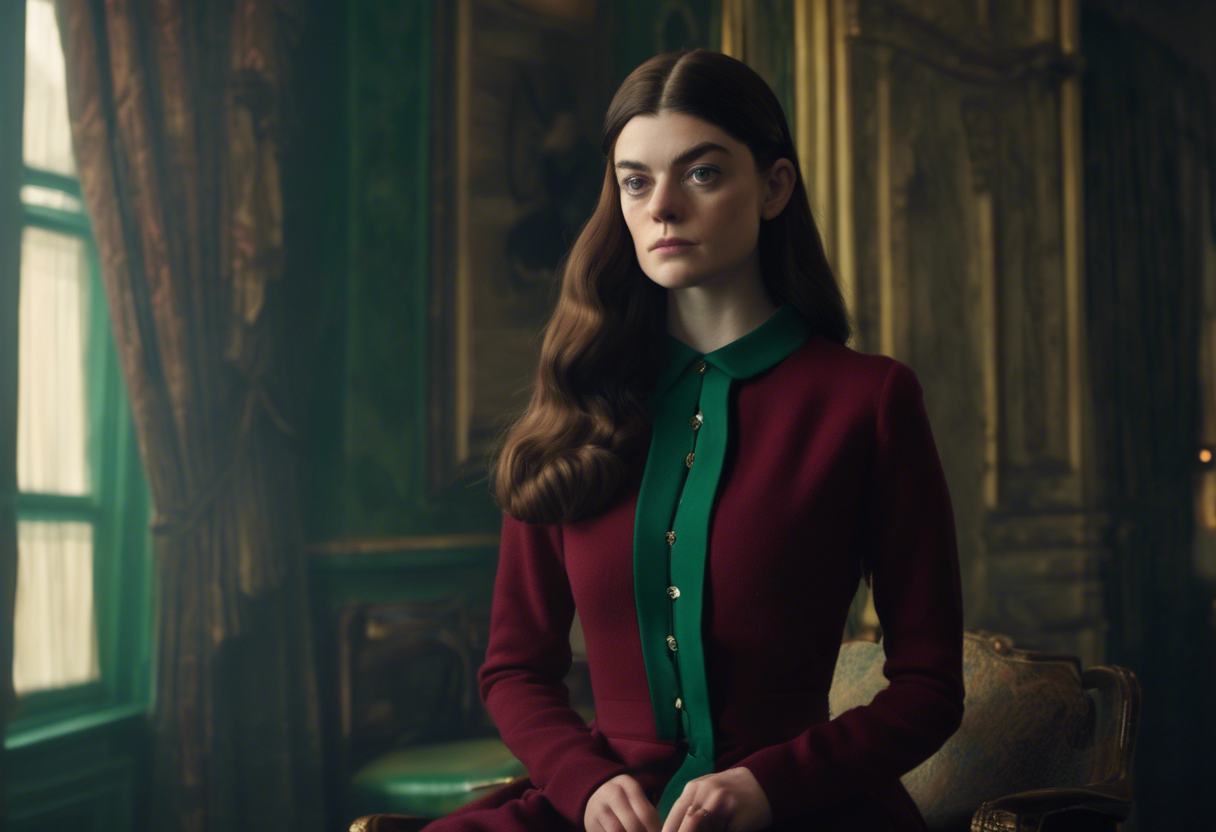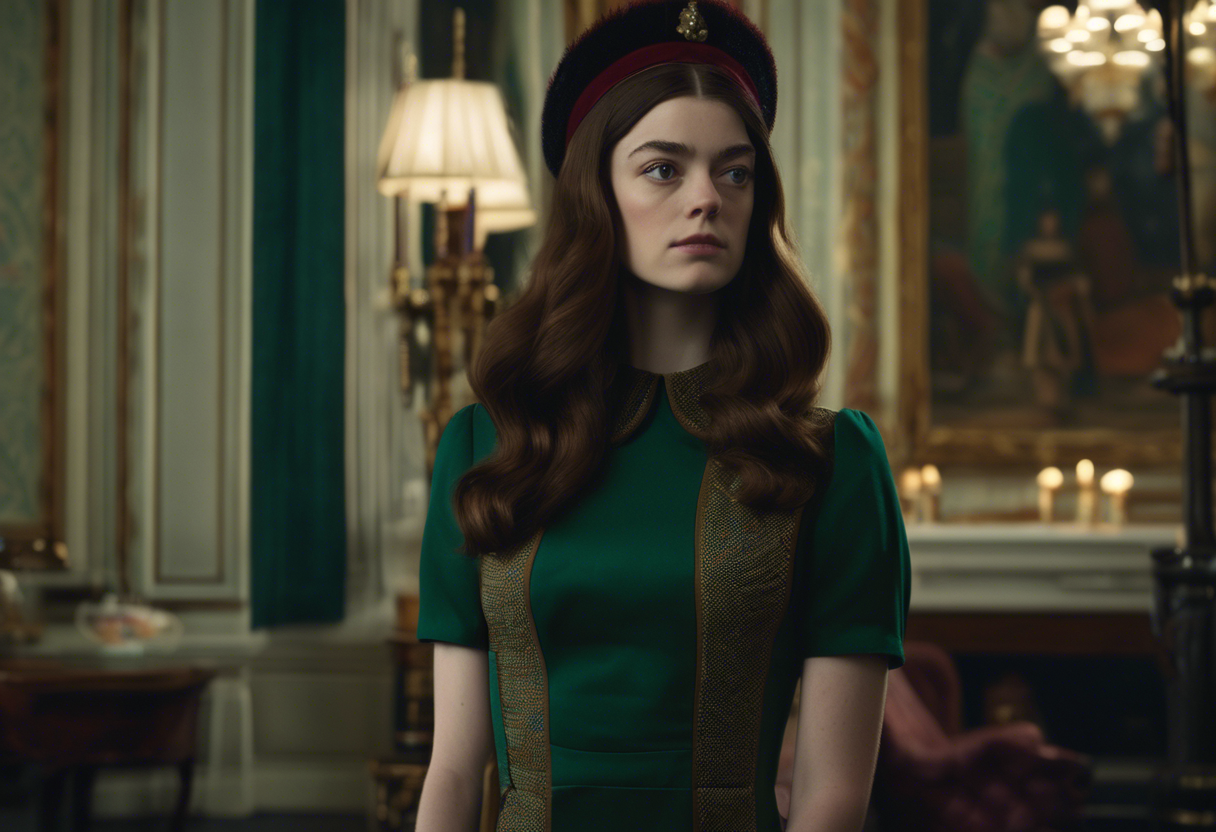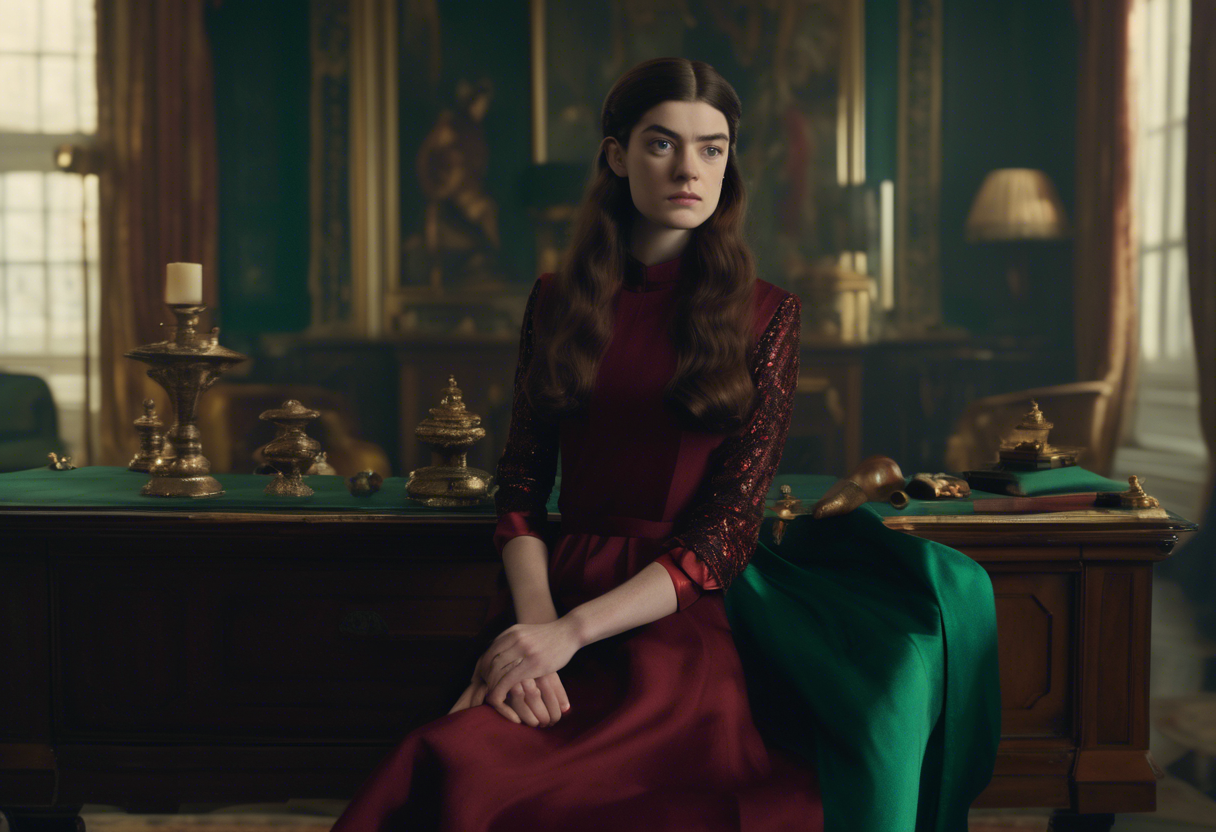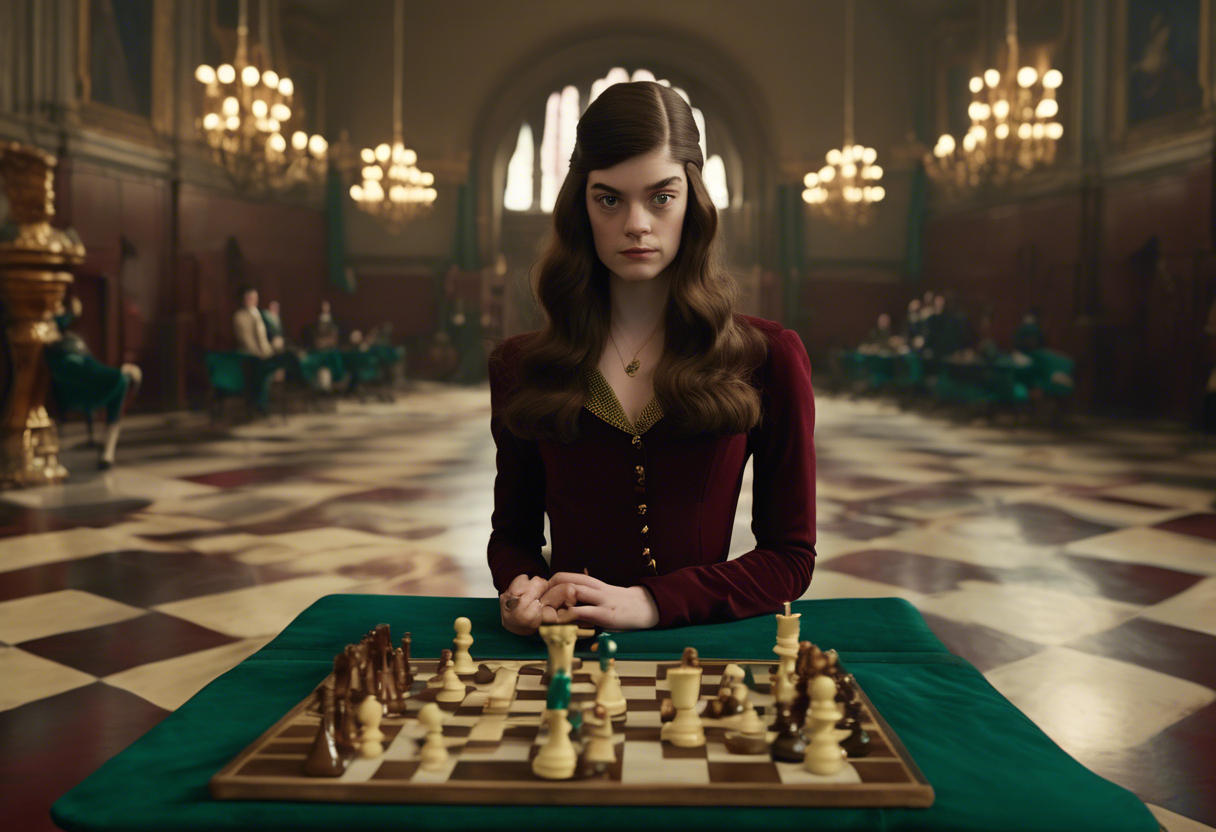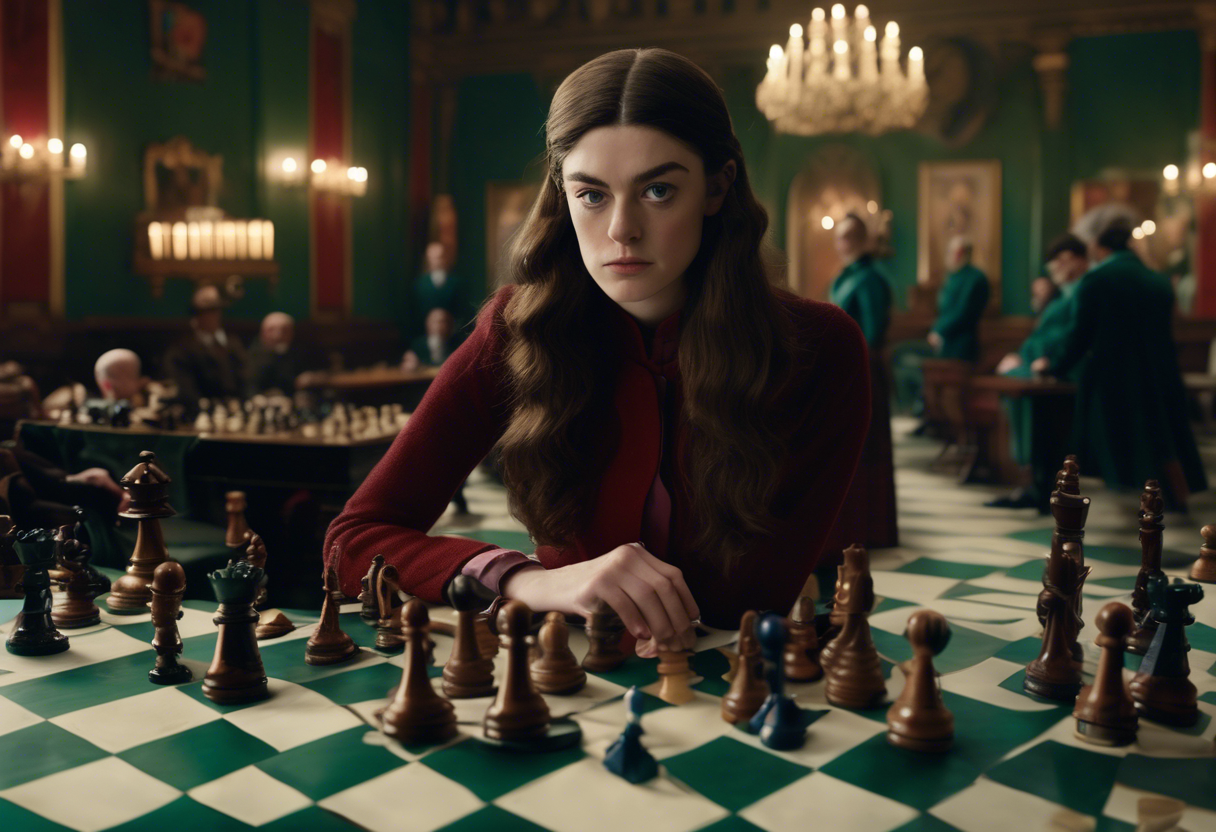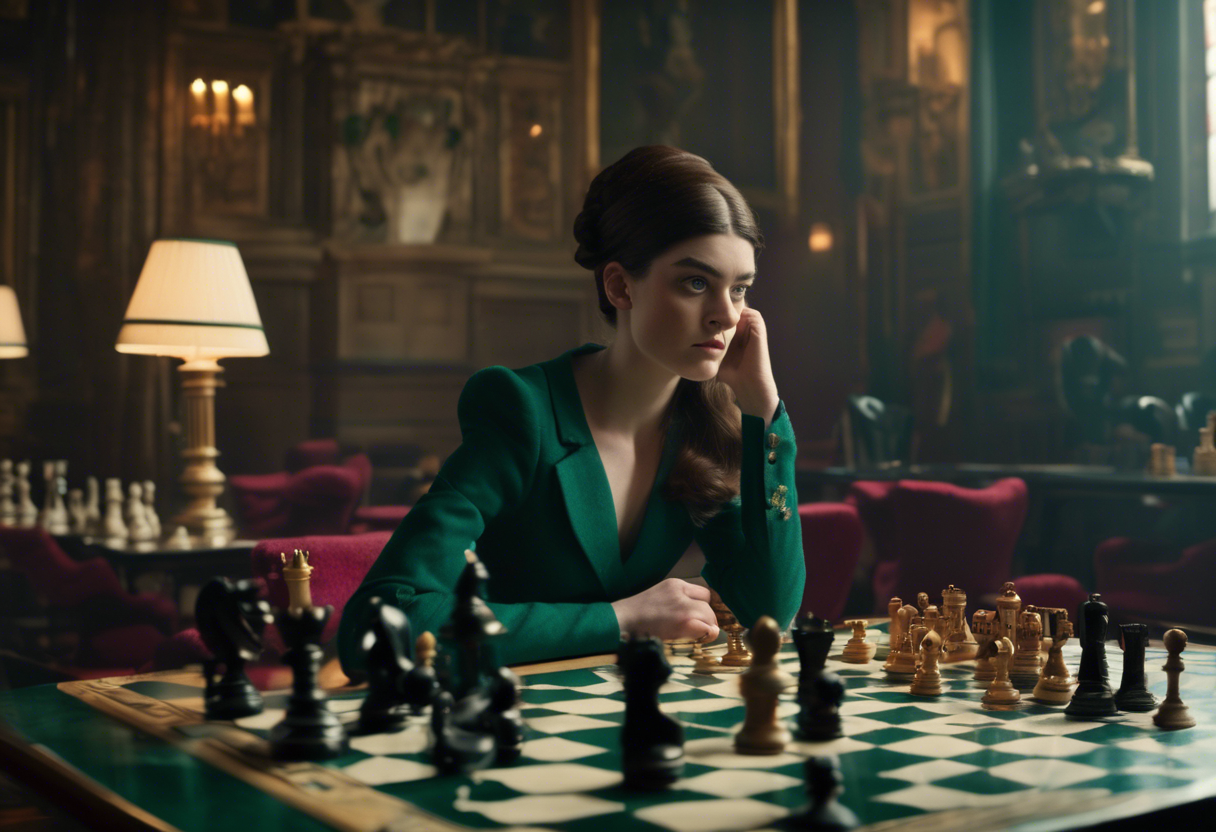Cleo is a French fashion model who makes a striking yet enigmatic appearance in Netflix’s critically acclaimed series The Queen’s Gambit. Introduced as a glamorous, free-spirited young woman, Cleo first meets the protagonist, Beth Harmon, during a party in New York at the apartment of Benny Watts, a fellow chess player and trainer. She quickly establishes a connection with Beth, not only embodying traits of carefree charm and unpredictability but also serving as a catalyst for one of the series’ most pivotal moments. Cleo’s role, though seemingly peripheral at first, carries a deeper significance as she influences Beth’s trajectory, particularly around the critical Paris Invitational tournament. Her presence intertwines with broader themes of vulnerability, trust, and the hidden perils accompanying Beth’s rise in the competitive chess world [3][4].
In the narrative, Cleo’s storyline is concise but impactful. After her initial encounter with Beth in New York, where she effortlessly befriends her, Cleo reappears during the Paris Invitational, coinciding with one of Beth’s most important matches against the reigning world champion, Vasily Borgov. Cleo invites Beth out for a night of drinking and distraction, resulting in Beth breaking her sobriety and suffering a severe hangover. Consequently, Beth oversleeps and underperforms in the match, leading to a crushing defeat that significantly affects her confidence. This incident marks a turning point in Beth’s journey, as it forces her to confront her vulnerabilities, reassess her priorities, and ultimately sets her on a path toward personal and professional growth. The exact motives behind Cleo’s actions remain ambiguous throughout the series, lending a layer of intrigue and speculation to her character [3][4].
One prevalent theory among viewers and critics posits that Cleo may have been acting as a deliberate saboteur sent by the Russians, Beth’s fiercest rivals in the chess world. Although the series never explicitly confirms this, various subtle hints fuel this interpretation. Cleo, portrayed as openly friendly but withholding aspects of her true intentions, exhibits a suspicious eagerness and coincidental timing—being in Paris the night before Beth’s decisive game. Her role in encouraging Beth to indulge in alcohol and flirtation, leading to her disarray during the tournament, aligns with tactics of espionage or manipulation seen in Cold War narratives. Such theory places Cleo within a broader media trope of the “honeypot” agent—using allure and deception to undermine an opponent. This layer enriches her character with complexity, framing her not just as a mere acquaintance but as a potentially strategic figure influencing Beth’s fate [1][2].
Analyzing Cleo’s personality and motivations reveals a multidimensional character. Outwardly, she appears easygoing, vivacious, and empathetic—a model of youthful freedom and sophistication. Yet, her guarded disclosures and tactical social maneuvers suggest an underlying calculated nature or at least an ambivalence about her true intentions. This duality makes Cleo fascinating and relatable: she embodies both the allure of friendship and the risk of betrayal. Her strength lies in her charm and ability to connect swiftly with others, but it also becomes a source of fragility for Beth, who is caught off guard. Cleo’s flaws—whether naivety, duplicity, or a complex mixture of both—propel the story forward by exposing Beth to unforeseen challenges. Her character development is subtle and non-linear, as she shifts from an emblem of carefree companionship to a figure shrouded in suspicion and consequence, illustrating the precarious balance between trust and deception in competitive and personal arenas [4][1].
Thematically, Cleo embodies distraction, temptation, and the vulnerability of success. Her role symbolizes the pitfalls faced by prodigious talent when seduced away from discipline by indulgence and external manipulation. The wild night out she instigates before Beth’s critical match highlights the fragility of control amidst pressure and isolation. Cleo’s presence accentuates themes of power dynamics—how charm and influence can undermine even the strongest wills. Additionally, she can be read as a metaphor for the Cold War era’s undercurrents of espionage and paranoia that contextualize Beth’s international chess battles. Her character thus enriches the series’ exploration of personal struggle, cultural conflict, and the ambiguous intersections of friendship and rivalry [1][4].
Cleo’s cultural impact is notable despite her brief screen time. Among fans, she has sparked extensive debate and analysis, particularly regarding the speculation about her being a Russian agent. This theory has circulated widely on platforms such as Reddit and Twitter, exemplifying the series’ power to inspire active audience engagement and interpretation. While The Queen’s Gambit itself has not produced adaptations or spin-offs centered on Cleo, her character remains iconic as a symbol of the darker, more complex forces at play beneath the veneer of the glamorous chess world. In popular culture, Cleo has come to represent the unpredictable wild card—someone who simultaneously invites connection and suspicion, reflecting broader anxieties about trust and sabotage in high-stakes environments [2][4].
Critically, Cleo has been received as a mysterious and divisive figure. Reviewers commend the subtlety in her portrayal, which eschews explicit villainy for nuance and ambiguity. Critics appreciate how Cleo’s character deepens the series’ tension and psychological depth, forcing audiences to grapple with questions of intent and consequence without clear answers. However, some viewers find her role frustrating due to the lack of concrete explanation or resolution about her background and purpose. This ambiguity has opened space for varied interpretations, fueling lively discussion rather than consensus. Overall, Cleo’s depiction is praised for enriching the narrative with complexity and intrigue, augmenting the unique blend of character study and suspense that defines The Queen’s Gambit [1][2][4].
In legacy, Cleo endures as a compelling figure emblematic of the interplay between trust and mistrust in personal and geopolitical realms. Her influence on Beth Harmon’s journey marks a critical juncture, symbolizing the costs of distraction and the importance of resilience. Contemporary discussions around Cleo often extend to themes of female agency, manipulation, and the subtle ways power operates in ostensibly glamorous contexts. She inspires character archetypes in media that explore the enigmatic collaborator or the ambiguous friend whose true loyalties are never entirely clear. While not the central protagonist, Cleo’s lasting appeal lies in her embodiment of complexity and uncertainty, traits that resonate widely in storytelling and cultural discourse about ambition, vulnerability, and control [1][2][4].
[seo]{
"keyphrase": "Cleo The Queen’s Gambit character analysis",
"description": "Detailed analysis of Cleo from The Queen’s Gambit, exploring her role, personality, symbolism, cultural impact, and legacy within the Netflix series."
}[seo]
References
- https://screenrant.com/queens-gambit-russians-elizabeth-paris-cleo/
- https://www.businessinsider.com/the-queens-gambit-cleo-russian-plant-spy-theory-2020-12
- https://en.wikipedia.org/wiki/The_Queen’s_Gambit_(miniseries)
- https://the-queens-gambit.fandom.com/wiki/Cleo
- https://www.imdb.com/title/tt10048342/fullcredits/

